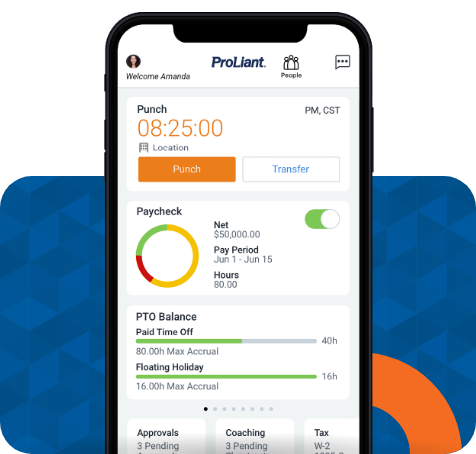As we look back on 2021, we reflect on the unique challenges we’ve faced and prepare for what is to come. Some things that have changed in the workplace will remain a part of our lives as we move forward into the new year.
In 2021, millions of employees left their jobs searching for better options and healthier work environments. This mass resignation resulted in significant losses for companies and supply shortages that impacted everyone living in the U.S. In 2022, we will continue to struggle with recruiting and burnout.
According to CNBC, many companies focused on offering mental health resources for their employees in the past year, yet there has still been a marked increase in burnout and stress. Employees are experiencing stress daily, and the pandemic and all of the social concerns it has brought to light have only exacerbated the issue. In addition, many companies have failed to update policies that would impact the pressure and demands people experience at work. As a result, we have seen a mass exodus as many leave their employers to focus on their health and better work-life balance.
What can be done about burnout?
Increasing pay has been shown to reduce stress and increase retention, and many employers are offering greater benefits to employees. However, employers should also look for what could be causing the stress in the workplace and make changes accordingly. Here are five ways to effectively address burnout for a better 2022.
1. Offer Increased Support for Parents
One huge source of stress is a lack of resources for single parents. According to TalentCulture, HR professionals can provide better support to single parents by offering childcare services, flexible spending accounts, or quality health care for families.
Flexible work options are also a great way to help parents manage, including options like remote work, flexible start times, one day out of the office, half days, and more. These measures will provide much-needed relief for parents and increase productivity and retention.
2. Address the Unique Challenges of Remote Workers
Employees who work from home are experiencing increased pressure and work hours. An article in Today suggests that the cause for this particular kind of burnout is due to “a continuous exposure to work” as remote workers spend their days “going from the bed to the couch and back again.” It’s hard to get away and shut down after work when you work where you live.
However, Randy Simon, a work-life balance expert and psychologist, states that the solution for work-life balance as a remote worker “comes down to boundaries.” He recommends that remote workers create a separate space in their home for work so that their entire home isn’t “synonymous with work.” If they don’t have the “luxury of a dedicated office space,” they might consider carving out a space somewhere that they designate as a work zone, including a “desk and computer setup that works.”
Other ways you can help mitigate stress for remote workers include limiting Zoom meetings, encouraging breaks, offering flexible schedule options, and providing mental health services.
3. Take On Leadership Burnout
According to Qualtrics, an American experience management company, a leadership exodus is on its way. A 2022 Qualtrics Employee Experience Trends report revealed that many leaders intend to leave in the new year.
What’s causing leadership burnout? As the pandemic and social changes continue into another year, leaders are experiencing burnout due to increased responsibilities. These new responsibilities include improving diversity and inclusion efforts, providing solutions for mental health support, speaking on social justice issues, and creating memorable employee experiences to increase retention, all while delivering business results.
Leaders are also susceptible to the work-life challenges other employees face, creating a perfect storm that will result in leadership abandoning ship in 2022. According to Qualtrics, organizations need to find ways to support leaders to prevent this exodus. Support can take the form of resources for gathering feedback from employees, training and toolkits for navigating new policies, and working “with leaders to reassess targets and productivity.”
One way employers can offer support to leadership is to provide technology to automate administrative tasks. Management and employee self-service tools are a great way to automate managerial duties, such as providing employee feedback and updating schedules. Tools for recruitment and onboarding are also vital for reducing workload and stress for management. These human resource solutions minimize administrative burden and allow managers time to focus on other efforts, such as diversity and inclusion policies and helping employees struggling with burnout.
4. Update HR and Payroll Technology
New workplace rules, new hires, onboarding, vaccination requirements, leave, and more have inundated management and HR teams with more administrative responsibilities than ever. Outsourcing HR functions with technology will benefit companies looking to meet the challenges of an ever-changing work environment. Automating various HR and payroll processes will help prevent burnout and allow HR teams and management more time to do more impactful work for their organizations.
Here are a few HR solutions that can help eliminate some of the burdens from your HR and management teams and decrease burnout across the board.
Recruitment and Onboarding Technology
An excellent recruitment and onboarding experience can significantly impact how new hires view your organization and ultimately decide whether they stick around. Automating the process will guarantee a consistent and efficient experience that will prepare new employees to be productive from day one.
Employee and Management Self-Service Tools
Adding self-service tools eliminates the need for manual input, saving time and money by allowing employees to make benefit elections, add scheduling preferences, and more. These tools also help leadership with performance management, decreasing the time necessary for meetings and exhausting Zoom calls.
Learning Management Systems
Implementing learning management systems can help your organization combat the skills gap. Providing opportunities for training and growth will also help increase retention and loyalty.
5. Make a Culture Change
Many companies are increasing benefits, offering flexible schedules, and more, but the real root of the problem comes down to work culture. Here are a few things your company can do to change your culture for the better.
- Focus on building trust in your HR department and leadership teams. Trust is vital for any other efforts for change to succeed. Establishing trust in HR begins with defining the role of HR, then your HR team can focus on establishing an equitable work environment and communication.
- Encourage communication and honesty. Be sure to continually remind employees that their input is valuable and that feedback will not be met with retaliation. The best way to know what is needed to eliminate burnout for your employees is to hear about their struggles and provide empathetic and practical solutions for them.
- Provide services for employees to reach out to when experiencing high levels of stress and burnout, including teledoc therapy and meditation apps.
- Reduce workloads and zoom calls for employees experiencing increased stress.
- Ensure employees are informed about their health benefits and provide healthy food and mental health breaks throughout the day.
- Review policies and make revisions where necessary to enhance fairness and support for each employee.
While more benefits and increased pay go a long way to relieving the stress many employees are experiencing, remodeling your work culture to be supportive and built on trust will go even further.
Looking Forward to a Fantastic Year of HR in 2022
Everyone is feeling it: The overwhelming pressure to create normalcy in the workplace. The turmoil of the past couple of years has resulted in much-needed improvements to diversity and inclusion efforts, workplace technology, training, and communication, which has also been very taxing on employees. Tackling burnout head-on at the start of the new year and continuing to focus on mental health and empathy for employees will be essential to continued success and establishing a new normal that will have a lasting impact on your organization for years to come.


.png)




No Comments Yet
Let us know what you think